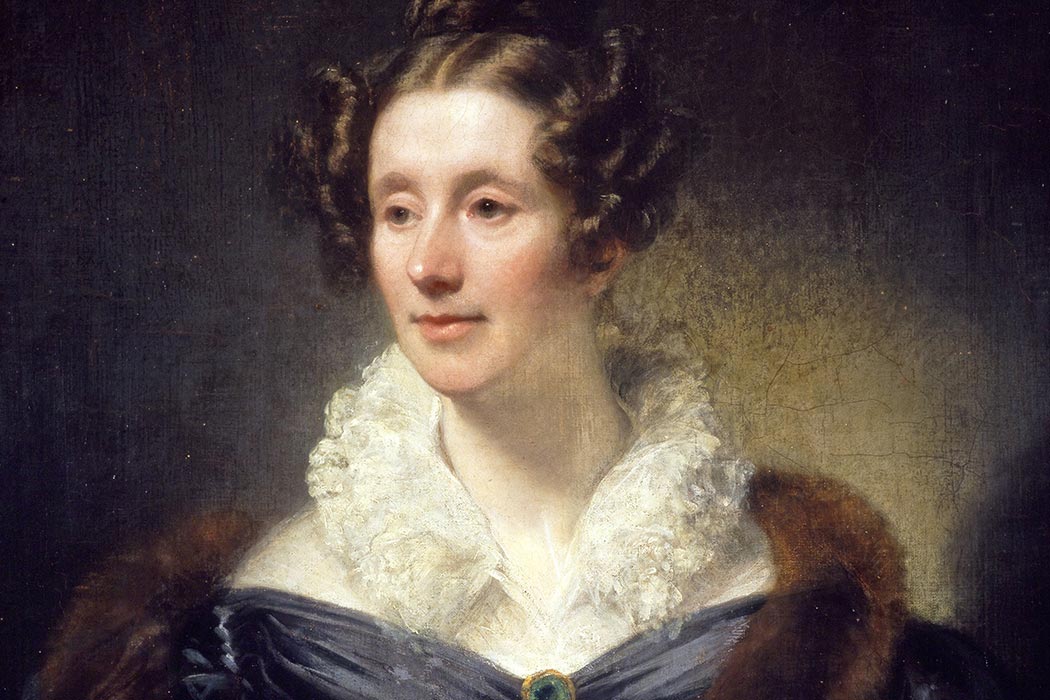At the October 1869 meeting of the American Philosophical Society, sixteen new members were elected. The first three were women: two Americans, Maria Mitchell and Elizabeth Agassiz, and a Brit named Mary Somerville. (A fourth member was another Brit, a fellow named Charles Darwin.) When Mary Somerville died in 1872, one obituary called her the “Queen of Nineteenth-Century Science.”
Born in 1780, Somerville was largely self-taught. At the time, education for young women was considered inappropriate. It was alleged that abstract thought overwhelmed their delicate constitutions. Nonetheless, at 15, Somerville started to read mathematics. When her father discovered this, he forbade her to continue, convinced it would drive her insane. In 1826, she published a paper on the magnetizing effects of light in Philosophical Transactions.
In 1831, her translation and explanation of Pierre-Simon Laplace’s calculus-filled Mécanique céleste, published in English as The Mechanism of the Heavens, was an enormous success. For the next 40 years, Somerville worked as what we would now call a science journalist. Her On the Connexion of the Physical Sciences went through ten editions. Elizabeth C. Patterson describes that work as “no mere popularization of outmoded science but an authentic statement of the latest views at the times of publication.”
Somerville never tired of writing. At the age of 89, she wrote a two-volume survey on molecular and microscopic science. Despite the prevailing Victorian view of a woman’s place in society, Somerville was encouraged by—and collaborated with—male scientists for much of her life. Two years after her death, Nature declared that she was an exception to the rule “that women are not by nature adapted for studies which involve the higher processes of induction and analysis.”
In “The Public Worth of Mary Somerville,” Clare Brock notes that there was some confusion as to whether Somerville was an actual scientist or “just” a writer. The “public worth” of Brock’s title refers to the debate over Somerville’s pension, first awarded by the Tory Robert Peel in 1835 and increased under the succeeding Whig government. Perhaps we should split the difference: Somerville was both a scientist and a popular science writer. By an interesting coincidence, the word “scientist” itself was first coined in 1834, by William Whewell, in a review of Somerville’s Connexion.







